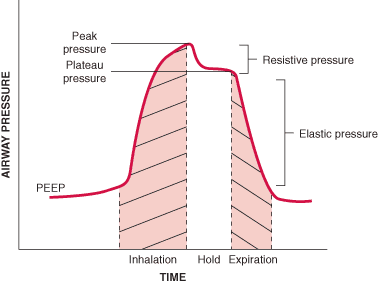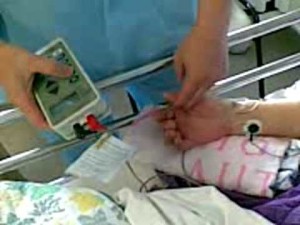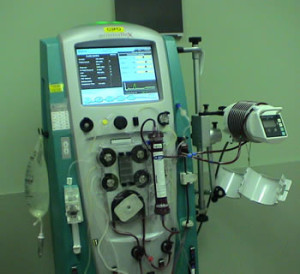As mentioned in my previous blog posts sepsis is a significant problem in the hospital settings of the world, costing countries billions of dollars a year in health care costs. In order to combat this problem, countries from around the world came together in the fall of 2002 and launched the Surviving Sepsis Campaign. In this post we will continue with other supportive therapies from the Surviving Sepsis Campaign.
Blood Product Administration
- Once tissue hypoperfusion has resolved and in the absence of extenuating circumstances. It is recommended that red blood cell transfusion occur only when hemoglobin concentration decreases to <7.0 g/dL to target a hemoglobin concentration of 7.0 –9.0 g/dL in adults.
- Not using erythropoietin as a specific treatment of anemia associated with severe sepsis.
- Fresh frozen plasma not be used to correct laboratory clotting abnormalities without a known source of bleeding or placement of invasive lines.
- Not using antithrombin for the treatment of severe sepsis and septic shock.
- In patients with severe sepsis, administer platelets prophylactically when counts are <10,000/mm3, in the absence of apparent bleeding. It is suggested prophylactic platelet transfusions be given when counts are < 20,000/mm3 if the patient has a significant risk of bleeding. Higher platelet counts (≥50,000/mm3) are advised for active bleeding, surgery, or invasive procedures.
Immunoglobulins and Selenium
Not to be used with severe sepsis or septic shock.
Mechanical Ventilation of Sepsis Induced ARDS (Adult Respiratory Distress Syndrome)
- Target tidal volume for adult patients is 6L/Kg of predicted body weight for patients with sepsis induced ARDS.
- Plateau pressures be measured in patients with ARDS and initial upper limit goal for plateau pressures in a passively inflated lung be ≤30 cm H2O.
- Use of PEEP (positive end-expiratory pressure) to avoid alveolar collapse at end expiration.
- Strategies based on higher rather than lower levels of PEEP be used for patients with sepsis-induced moderate or severe ARDS.
- Prone positioning be used in sepsis-induced ARDS patients with a Pao2/Fio2 ratio ≤100 mm Hg in facilities that have experience with such practices.
- The head of the bed, in mechanically ventilated patients with sepsis, should be at 30-45 degrees to prevent aspiration and development of ventilator-associated pneumonia (PNA).
- That noninvasive mask ventilation (NIV) be used in that minority of sepsis-induced ARDS patients in whom the benefits of NIV have been carefully considered and are thought to outweigh the risks.
- That a weaning protocol be in place and that mechanically ventilated patients with severe sepsis undergo spontaneous breathing trials regularly to evaluate the ability to discontinue mechanical ventilation when they satisfy the following criteria:
a) arousable; b) hemodynamically stable (without vasopressor agents); c) no new potentially serious conditions; d) low ventilatory and end-expiratory pressure requirements; and e) low Fio2 requirements which can be met safely delivered with a face mask or nasal cannula. If the spontaneous breathing trial is successful, consideration should be given for extubation.

- Against the routine use of pulmonary artery catheters in patients with sepsis induced ARDS.
- A conservative rather than liberal fluid strategy for patients with established sepsis induced ARDS, who do not have evidence of tissue hypoperfusion.
- In the absence of specific indications such as bronchospasm, not using beta 2-agonists for treatment of sepsis-induced ARDS. These are medications used to treat asthma such as albuterol.
Sedation, Analgesia, and Neuromuscular Blockade in Sepsis
- Continuous or intermittent sedation be minimized in mechanically ventilated sepsis patients, targeting specific titration endpoints.
- Neuromuscular blocking agents (NMBAs) be avoided if possible in the septic patient without ARDS due to the risk of prolonged neuromuscular blockade following discontinuation. If NMBAs must be maintained, either intermittent bolus as required or continuous infusion with train-of-four monitoring of the depth of blockade should be used.

Glucose Control
- A protocolized approach to blood glucose management in ICU patients with severe sepsis commencing insulin dosing when 2 consecutive blood glucose levels are >180mg/dL. This protocolized approach should target an upper blood glucose 80mg/dL rather than an upper target blood glucose ≤ 110 mg/dL.
- Monitor blood glucose levels every one to two hours until stable. Then monitor every 4 hours. (Many hospitals will have their own standard protocol for monitoring glucoses on patients requiring tight control).
- Glucose levels obtained with point-of-care testing of capillary blood be interpreted with caution, as such measurements may not accurately estimate arterial blood or plasma glucose values.
Renal Replacement Therapy
Use continuous therapies to facilitate management of fluid balance in hemodynamically unstable septic patients.

Bicarbonate Therapy
Not using sodium bicarbonate therapy for the purpose of improving hemodynamics or reducing vasopressor requirements in patients with hypoperfusion-induced lactic acidemia with pH ≥7.15.
(Recommendations: Other Supportive Therapy of Severe Sepsis, 2012)
When reviewing a case involving sepsis I utilize the principals of the Surviving Sepsis Campaign as a blueprint for my analysis of the case. I have reviewed quite a number of cases involving sepsis. If you have a case involving sepsis I would love to work with you.
Works Cited
Recommendations: Other Supportive Therapy of Severe Sepsis. (2012). Retrieved August 7, 2013, from Surviving Sepsis Campaign: http://www.survivingsepsis.org/Guidelines/Documents/Other%20supportive%20therapy.pdf
Leave a Comment